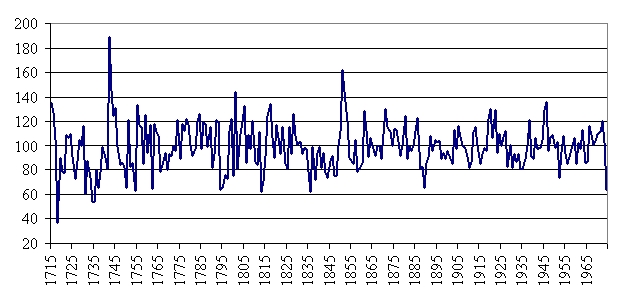Investigations on pedunculate oak (Quercus robur L.) started in Lithuania in 1970–1975 when a network of 43 experimental plots in oak stands was set up. At this time, tree-ring widths of oak were measured within 0.05 mm accuracy. Trees were sampled again in several plots in the 1990s. The longest tree-ring series of oak spans 259 years from 1715 to 1974 (Битвинскас, Кайрайтис, 1975). The compiled local chronologies (indices only) were published in the 1st volume of chronologies in 1979. Investigations have shown that the most noticeable growth suppressions occurred in 1730–1770 and, for some experimental plots, also in 1830-1860. In total, 33 years with radial growth decrease common for the majority of chronologies were observed in 1800–1971. During the last century, the negative pointer years occurred in 1928, 1937–1941, 1952–1955 and 1964–1965. In addition, 27 positive pointer years were found (Битвинскас, Кайрайтис, 1974).

The local chronology of oak (indices) in Giria forestry (Rokiškis forest enterprise).
Computational possibilities at this time were quite limited. Correlation analysis with climatic variables has revealed the highest coefficients with temperature in February, April and May. In addition, the links with precipitation are lower and more variable (Кайрайтис, 1978).
Oak cores from previous samplings were preserved and measured again by Kristina Sohar and Adomas Vitas within 0.01 mm accuracy. The local chronologies were compiled, which were used to construct a regional oak chronology for Lithuania, the dating of architectonical timber and the study of sapwood rings.